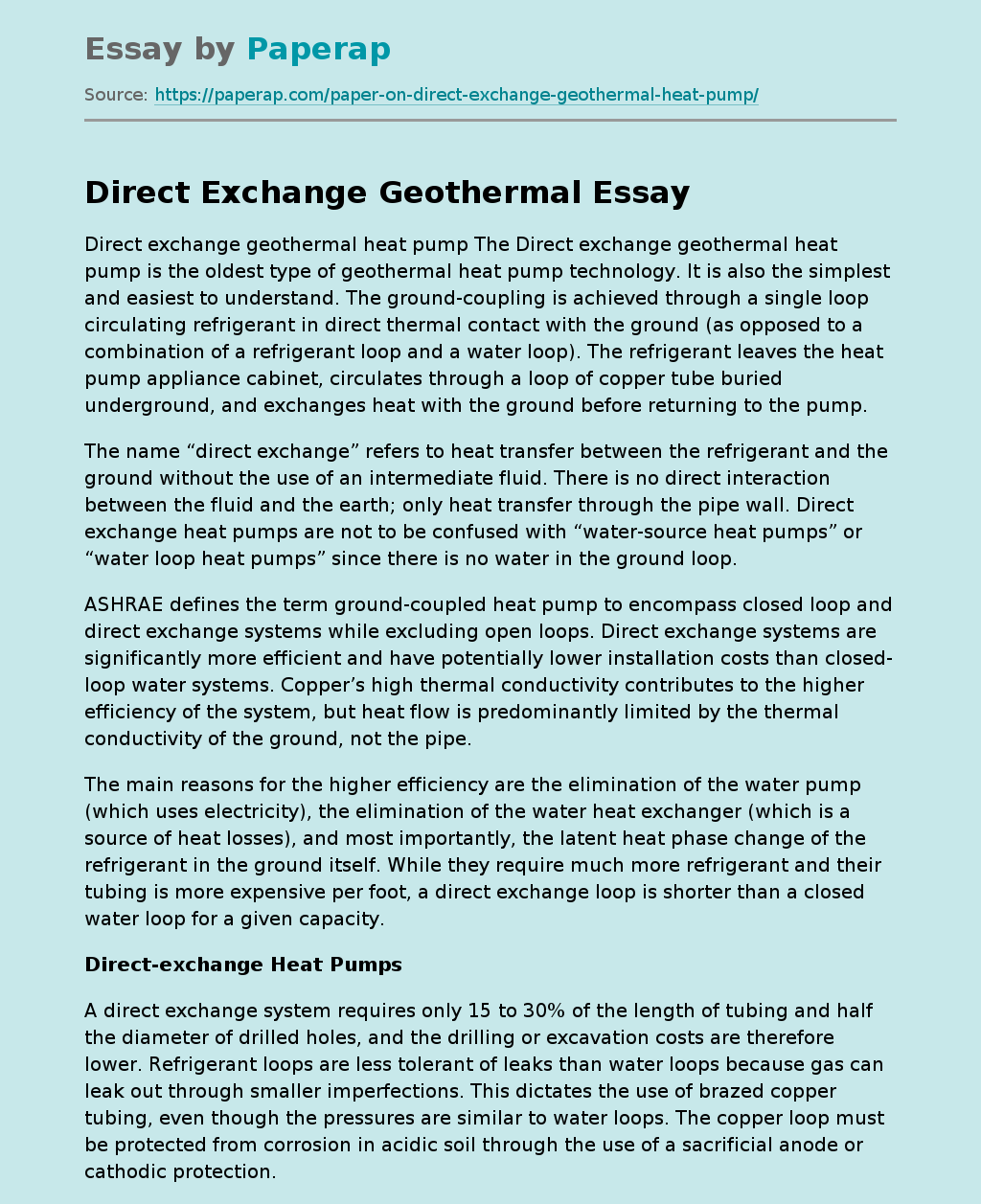Direct Exchange Geothermal
Direct exchange geothermal heat pump The Direct exchange geothermal heat pump is the oldest type of geothermal heat pump technology. It is also the simplest and easiest to understand. The ground-coupling is achieved through a single loop circulating refrigerant in direct thermal contact with the ground (as opposed to a combination of a refrigerant loop and a water loop). The refrigerant leaves the heat pump appliance cabinet, circulates through a loop of copper tube buried underground, and exchanges heat with the ground before returning to the pump.
The name “direct exchange” refers to heat transfer between the refrigerant and the ground without the use of an intermediate fluid. There is no direct interaction between the fluid and the earth; only heat transfer through the pipe wall. Direct exchange heat pumps are not to be confused with “water-source heat pumps” or “water loop heat pumps” since there is no water in the ground loop.
ASHRAE defines the term ground-coupled heat pump to encompass closed loop and direct exchange systems while excluding open loops.
Direct exchange systems are significantly more efficient and have potentially lower installation costs than closed-loop water systems. Copper’s high thermal conductivity contributes to the higher efficiency of the system, but heat flow is predominantly limited by the thermal conductivity of the ground, not the pipe.
The main reasons for the higher efficiency are the elimination of the water pump (which uses electricity), the elimination of the water heat exchanger (which is a source of heat losses), and most importantly, the latent heat phase change of the refrigerant in the ground itself.
While they require much more refrigerant and their tubing is more expensive per foot, a direct exchange loop is shorter than a closed water loop for a given capacity.
Direct-exchange Heat Pumps
A direct exchange system requires only 15 to 30% of the length of tubing and half the diameter of drilled holes, and the drilling or excavation costs are therefore lower. Refrigerant loops are less tolerant of leaks than water loops because gas can leak out through smaller imperfections. This dictates the use of brazed copper tubing, even though the pressures are similar to water loops. The copper loop must be protected from corrosion in acidic soil through the use of a sacrificial anode or cathodic protection.
Direct Exchange Geothermal. (2019, Dec 05). Retrieved from https://paperap.com/paper-on-direct-exchange-geothermal-heat-pump/

